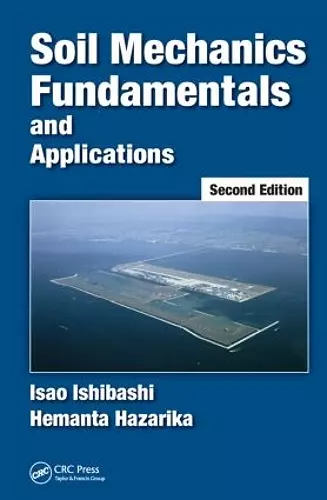Soil Mechanics Fundamentals and Applications
Hemanta Hazarika author Isao Ishibashi author
Format:Hardback
Publisher:Taylor & Francis Inc
Published:24th Mar '15
Currently unavailable, our supplier has not provided us a restock date

How Does Soil Behave and Why Does It Behave That Way?
Soil Mechanics Fundamentals and Applications, Second Edition effectively explores the nature of soil, explains the principles of soil mechanics, and examines soil as an engineering material. This latest edition includes all the fundamental concepts of soil mechanics, as well as an introduction to foundation engineering, including coverage of site exploration, shallow and deep foundation design, and slope stability. It presents the material in a systematic, step-by-step manner, and contains numerous problems, examples, and solutions.
New to the Second Edition:
The revised text expands the contents to include an introductory foundation engineering section to make the book cover the full range of geotechnical engineering. The book includes three new chapters: Site Exploration, Deep Foundations, and Slope Stability.
This text:
- Provides an introductory chapter on soil mechanics
- Explores the origin and description of soils and discusses soil shapes and gradations
- Presents the unique characteristics of clays
- Details soil classifications by the Unified Soil Classification System (also ASTM) and by the American Association of State Highway and Transportation Officials (AASHTO)
- Highlights laboratory and field compaction techniques, including field specification and density testing,, and the CBR (California Bearing Ratio) method
- Discusses the flow of water through soils, defining hydraulic heads, as well as the two-dimensional flow net technique and a systematic approach to compute boundary water pressures
- Examines the concept of effective stress and its applications to various soil mechanics problems
- Explores stress increments in a soil mass due to various types of footing load on the ground
- Presents Terzaghi’s one-dimensional consolidation theory and its applications
- Covers Mohr’s circle from geotechnical perspectives with use of the pole, which is utilized in chapters relating to shear strength and lateral earth pressure
- Addresses the shear strength of soils, failure criteria, and laboratory as well as field shear strength determination techniques
- Evaluates at-rest earth pressure and the classic Rankine and Coulomb active and passive pressure theories and present critical review of those methods
- Reviews introductory foundation engineering and site exploration
- Describes the bearing capacity theory and, as an application, the shallow foundation design procedure
- Covers deep and shallow foundation design procedures
- Explains slope stability problems and remediation procedures, and more
Soil Mechanics Fundamentals and Applications, Second Edition is a
concise and thorough text that explains soil’s fundamental behavior and its applications to foundation designs and slope stability problems..."Overall, this book is written in an easy-to-read style suitable for undergraduate engineering students. Chapter 1 is an excellent example of that style. In just a few pages, Chapter 1 provides the reader with an appreciation for geotechnical engineering and its evolution. It succinctly makes the point that soils are different from other civil engineering materials, and thus gives students a reason and purpose for studying the behavior of soils in a stand-alone course. In particular, the case histories in Section 1.5 stand out; students are immediately confronted with some of the unique challenges in geotechnical practice. ... For me, the material in Chapter 2 that stands out is related to phase diagrams; the presentation of phase diagrams is ideal for students. How one can use the phase diagram to determine fundamental physical properties is illustrated well. It emphasizes the process of 'filling in' the phase diagram to find phase weights and volumes, rather than having students sort through a plethora of pre-derived expressions to find one that works for a specific problem. This process is important because it helps reinforce the fundamental weight-volume relationships for soils, which can be used again and again throughout the course as students learn more advanced concepts."
—Charles E. Pierce, Ph.D, The University of South Carolina, Columbia, USA
"In summary, the level of explanation is much richer than most undergrad level books in use and … Many soil mechanics text book authors do not know where to draw the line between mechanics and engineering and they load up the texts with too many foundation related information"
—Hirroshan Hettiarahchi, United Nations University
"This is a good soil mechanics book. It is written very concisely and straightforwardly, in a way students can teach themselves. It covers most of the common topics in the areas of Soil Mechanics and Geotechnical Engineering practice. It is a good textbook for a Civil Engineering Program where students only take one course in geotechnical engineering."
—Jay X. Wang, Louisiana Tech University
ISBN: 9781482250411
Dimensions: unknown
Weight: 960g
432 pages
2nd edition